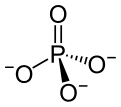ftwendy
- 1,495
- 263
...by "improving potency" I think I mean, converting non-psychoactive thc-a into psychoactive thc, right? Head spinning. :)
Okay... that makes more sense. I think. I'm going to have to process this over a while, since its all new to me. I think my original question makes me seem more familiar with chemistry than I am. I know nothing.
What I'm really getting at, is *why*? Why take the extra step to isomerise? Is this about improving potency or purity?
Potency, the stable isomer is a more active version of THC.
Am I correct in saying 'the [now stabilized] isomer is a more active version of THC?
squiggly - please explain to me (in as laymens terms ass possible) the different between phosphate and phosphorous in the context of organic gardening as it pertains to guanos and other organic p sources?
Also, can a chemical be purged once its formed a covalent bond with another chemical?
Thanks!
outwest

Also, can a chemical be purged once its formed a covalent bond with another chemical?
Thanks!
outwest
Thanks again. It was suggested the other day that butane and thc form a covalent bond so the butane can never be truly purged once introduced. Is this the case?
outwest
I've got a new one, this may be more of a physics question though.
How much vacuum would it take to boil off water at room temp. Eg: could I use the harbor freight vacuum pump to dry bubble hash? A la BHO vacuum chamber? (I don't think I can do it with a water aspirator, but that would be real slick)
I haven't built one yet, but I was thinking a vacuum chamber could neatly evaporated the water out of my bubble.
That's what I had in mind. Would an aspirator be strong enough to do a BHO extraction as well? Water is cheap, and aspirators only cost about 20 bucks online.
Thanks for your opinion. I was trying to figure out if the aspirator is worth the 20 bucks or if I should just pony up the 100 for an electric pump.
